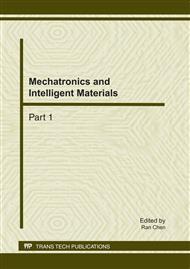p.813
p.818
p.823
p.827
p.832
p.837
p.842
p.846
p.850
Study on a New-Style Air-Condition System Driven by Combination of Exhaust Heat of Engine and Solar Energy
Abstract:
Comprehensive utilization of Exhaust Heat of Engine and Solar Energy is a revolutionary technique. There is seldom literatures focusing on this scope. The mechanical compressor using chemical refrigerant principle is the core driving component of traditional car air conditoner. However, the issues such as engergy-comsuming, transmission efficiency, pollution etc. remains a great challenge. A new driving scheme is put forward in this paper, in which primary exhaust heat sources is used to drive the air conditioner. There requires quite a few moving parts in this new scheme. If the low power engine is mounted in the car, addional solar energy can be combined to drive the air conditioner. The principle of the new air-condition system and its structure are illustrated in this paper.The automatic control system for this new Air-condition System driven by combination of Exhaust Heat of Engine and Solar Energy is described in detail as well. This new system is energy-conserving, environment-protective, low-carbon, and high efficient. It has a promising application prospect.
Info:
Periodical:
Pages:
832-836
Citation:
Online since:
February 2011
Authors:
Price:
Сopyright:
© 2011 Trans Tech Publications Ltd. All Rights Reserved
Share:
Citation:



